About AIMM
Origin
The Annals of Irish Mathematics and Mathematicians (AIMM) was created by Colm Mulcahy in December 2014, as a result of an innocent email exchange with Tony O'Farrell at Maynooth, originally as an attempt to track all Irish students who earned advanced mathematics degrees.
Colm continues to curate AIMM today, as its size, scope and depth have grown. It now includes several offshoots (Atlas, Books, Women) documenting, respectively, the geographical origins of Irish mathematical talent, book length publications by and about Irish mathematicians, and the contributions of women to maths in Ireland. October 2015 saw the official launch of the 2016 Irish Mathematics calendar, which highlighted 72 notable people with mini-biographies, as well as hundreds of birthdays.
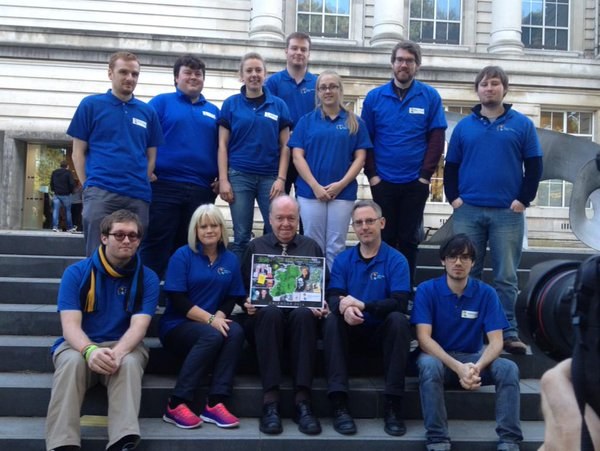
Colm Mulcahy (centre, flanked by Sheila Donegan and Eoin Gill of Maths Week) holding the first ever Irish Mathematics Calendar at its launch in Belfast
Colm studied mathematics at University College Dublin before completing his PhD in algebra at Cornell University. He is Professor of Mathematics at Spelman College, Atlanta, Georgia, where he has taught since 1988. He is well known in mathematics outreach circles, and is an active and enthusiastic supporter of Maths Week in Ireland. He is an internationally recognised expert in mathematical card tricks, having contributed numerous original principles to the field himself, and is the author of the book "Mathematical Card Magic: Fifty-Two New Effects" (CRC, 2013). He's also a prolific blogger (Scientific American, Huffington Post, MAA, Aperiodical).
Objectives
- Promote a deeper and inclusive knowledge and appreciation of Irish mathematics and mathematical sciences in general both in academia and educational circles, and among the general public.
- Collect and share on the web basic information about Irish mathematicians down through the ages, in particular in the past century or two.
- Create a dynamic electronic archive of Irish mathematics and mathematicians which anyone can enjoy and use for research, and which future generations can maintain and develop further.
The reach of Irish mathematical science is wide, and has seen Irish scholars shine at some of the world's leading centres of learning, from Cambridge and Oxford to universities in Paris and Rome, and from Caltech, Berkeley, and Chicago to Harvard and MIT. It has also taken people from Antrim to the Azores, from Cobh to Beijing, Gweedore to Costa Rica, and from Harold's Cross to Hawaii.
Others have come from far away places to train in Ireland—e.g., from Greece to Coleraine, as well as from Tanzania to Cork and Maynooth—and then returned to their home countries to train future generations. The story goes back to the time of Gauss and beyond, and covers every imaginable manifestation of mathematics and mathematical science. We hope that a taste of the richness therein can be found in what follows.
Background
Web searches for "Irish mathematicians" lead to disappointing results. Many of the major players from eras past are well documented online, but overall the representation of Irish mathematics—e.g., at Wikipedia and the excellent MacTutor historical site—leaves much room for expansion. Steps are now being made to address this issue.
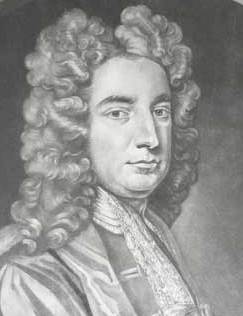
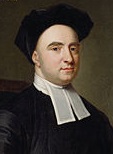

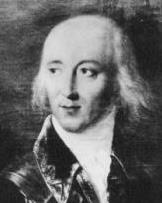
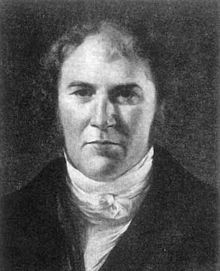

The roots of mathematics as an independent discipline are complex, and entangled with natural philosophy—what we know today as physics (and so denoted in all that follows)—as well as astronomy, engineering and material science. The people in Britain and Ireland who contributed to mathematical science before the 19th century were more often than not scientists, doctors, lawyers or philosophers. Many of those were also (unmarried) clergymen, due to requirements long imposed by academic institutions of that era.
Until the 20th century, a significant majority of the mathematicians working in Ireland were gentlemen educated in Great Britain, many of them having been born there too. Educational and employment opportunities at an appropriate level were denied to women, and often to Catholics too. And yet, over time, independent Irish thinkers with great talent and originality from non-traditional backgrounds started to break into the closed ranks of academia and get their ideas heard.

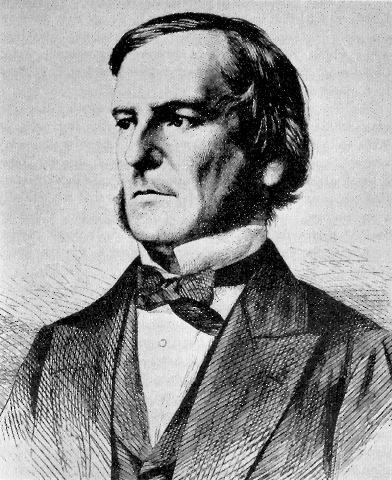
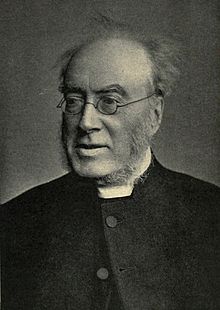


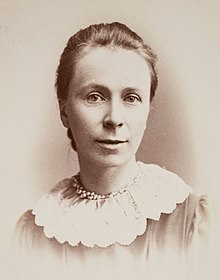
Notable exceptions were the world-famous Hamilton, the remarkable John Casey (the first Catholic to rise in academic ranks in mathematics in his own country), and Irish born and bred Sophie Bryant (the first woman to have a paper published in the Proceedings of the London Mathematical Society).
The general public already has the impression that all of mathematics is old and dusty, since a great part of the undergraduate curriculum has been set in stone for a long time, and the names that crop up are undeniably from long gone days. However, we'd hate for anyone to think that Irish mathematics hasn't been thriving in the past century, or isn't vibrant today.
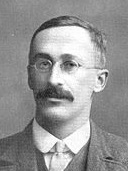
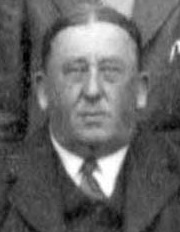


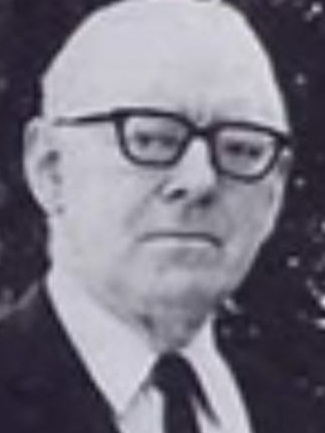
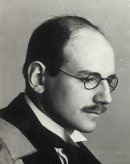

The 20th century saw graduates of newer Irish universities, as well as those from Queens (Belfast), St. Patrick's College (Maynooth) and Trinity College Dublin, excel in mathematical arenas. This took place both in academia and elsewhere, at home and abroad.



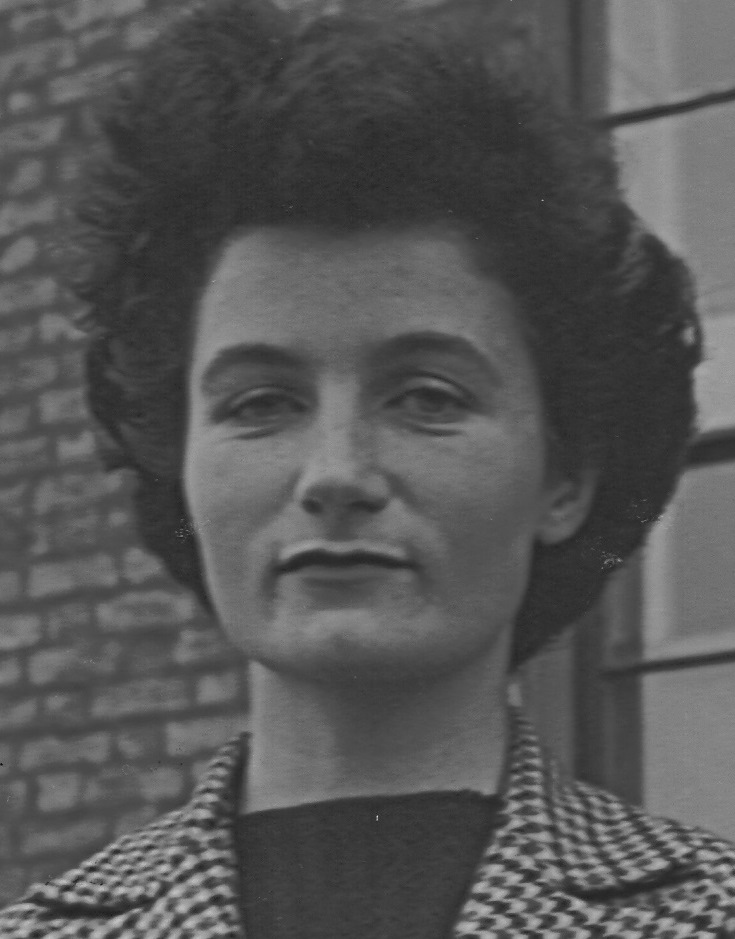


Sheila Power (later Tinney) from Galway seems to have been the first woman from Ireland to get a PhD in the mathematical sciences, in 1941, under Max Born in Edinburgh. John Herivel from Belfast played a pivotal role at Bletchley Park during the war.
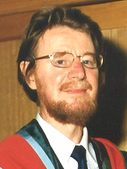
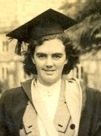
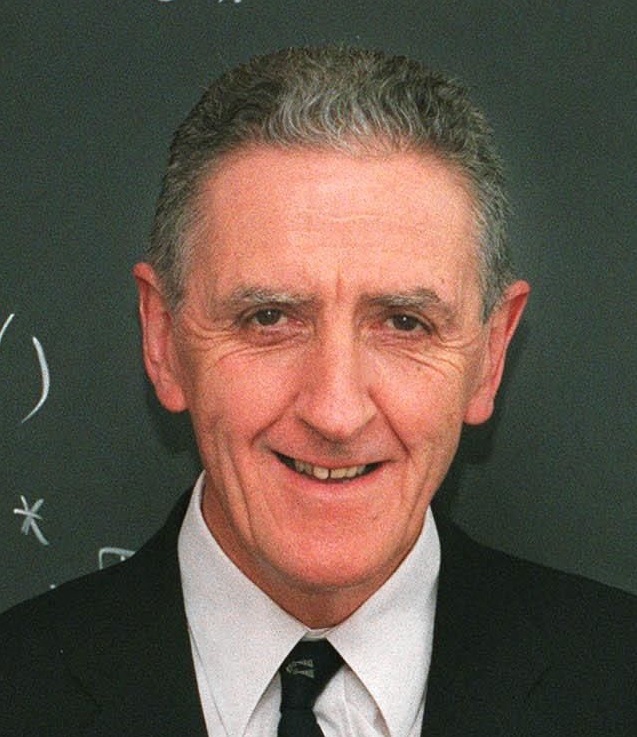


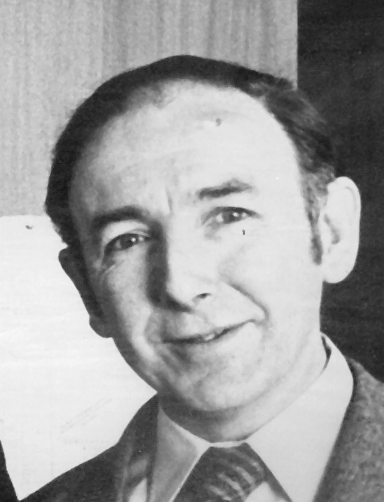
The 1950s saw the early stages of a particular flowering of mathematical physics talent, as well as the graduation of the first Irish woman to later earn a PhD in pure maths.
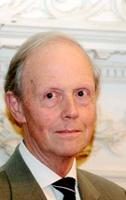
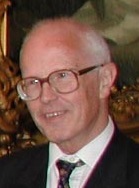

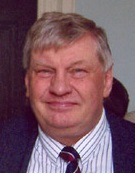

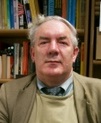
The 1960s saw huge expansion in the staff at all universities, as access to third level education broadened dramatically. The decade also saw more Irish graduates head overseas to pursue postgraduate studies, particularly in Great Britain and North America.
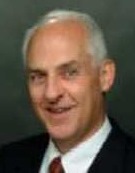

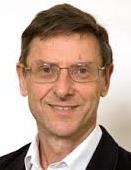


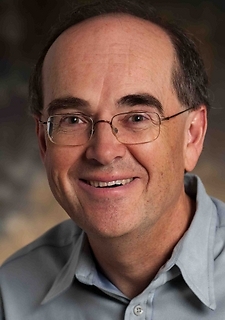
Along the way, mathematicians from Britain and further afield continued to come to Ireland in search of opportunity, often making a big impact with research, research supervision, and programmes they initiated.






As the 21st century unfolds, Irish mathematics has a newfound confidence and is more reflective of the diversity encountered on the island.
Aim
What have the Irish ever done for mathematics, apart from Hamilton's invention of quaternions? Quite a lot, needless to say, and some of that can be inferred from the information collected in and linked to from the Degree Database below. The insistence on organising everything by university degrees only really makes sense in the past century or so, but many key earlier people—especially those at institutes of higher learning—have been included to facilitate an overview of the timeline of Irish mathematics.
The story is much richer than what is documented here, of course, and following some of the resulting trails reveals many delights and surprises. For instance, Robert Adrain from Carrickfergus in County Antrim published on the method of least squares before Gauss did, Sheila Tinney (nee Power) from Galway worked with Schrödinger, and just recently Gary McGuire's team at the Irish Centre for High-End Computing showed that a 16-clue Sudoku puzzle does not exist.
Creators of Mathematics: The Irish Connection (2000), edited by Ken Houston, is essential reading.
The IMS website is a great place to start researching Irish mathematics. Many hundreds of people are documented at the outstanding Mathematics Genealogy Project site—but often with no hint of any relevant Irish connections. Where possible, we always link to the Math Gen pages of relevance; such links generally list thesis titles and "mathematical descendants."
Wikipedia has entries on some of the big names, especially from earlier times, as does MacTutor; again we give links where known. Other possible sources of information are MathTree and Physics Tree.
Our AIMM (Annals of Irish Mathematics & Mathematicians) aim is:
To develop and maintain a dynamic and comprehensive Annals of Irish Mathematics and Mathematicians, at the third level. We also wish to track the influence and contribution of Irish mathematicians to the profession worldwide via their progeny in the discipline, as measured by the supervision of doctoral theses, and, on a spin-off webpage, the publication of books.
Needless to say, it is original research—be it solo or collaborative—and the dissemination of results via talks and journal articles that are at the core of mathematical life, but trying to document that in the Irish context would be a task of considerable magnitude. Our goals are more modest.
Scope
For now, the primary focus is on the period after 1800, as surviving records from before then are quite sparse, and educational opportunties were also very limited in earlier times.
In the past four or five decades the doctorate has come to be seen as the de facto expected qualification granting entry into careers in research and teaching. Earlier in the 1900s, people like Roy Geary (with only a master's) and Jack Todd (who stopped at a bachelor's) excelled in industry and academia, respectively. In the mid 1800s, George Boole became the first professor of maths at Queen's College, Cork, despite not having any degree at all. Yet, all three of these scholars rubbed shoulders with some of the giants of their eras, and themselves made signficant contributions to their fields.
A special effort is being made to track all women (F) in the discipline.
Another goal is noting all of those with significant competence in the Irish language (G), those with teaching training at the primary or secondary level (H—think H Dip), and tracking who went on to become heads of departments or schools, or university registrars, deans, provosts or presidents.
Further down the road, perhaps we'll list promotions, notable honours, distinctions and patents awarded.
Definitions of "Irish" and "Mathematics
"Irish" (or "Ireland") refers to the whole island. Mathematics inspired by a walk in the Mournes, a chat with a colleague in Coleraine, or sipping a whiskey near the Giant's Causeway, is as Irish as any that arises from a swim off Waterford, a session with a postgraduate in an office in Galway or Limerick, or over a pint in Cork. Not to mention an idea hatched by an emigrant Irish mind while lecturing to students in Cambridge, Toronto, Paris or Madison. Speaking of pints, we can't abstain from including a non-academic Englishman by the name of William Sealy Gosset, alias Student, on account of the decades he spent at the Guinness brewery at St. James's Gate in Dublin, refining key stasticical concepts now used worldwide.
"Mathematics" is taken in the broadest sense, meaning any of the mathematical sciences: pure and applied mathematics, mathematical physics, statistics, operations research, and also mathematics education and history. The goal is include all researchers and teachers at the third level, including those whose primary duty was to "teach the engineers."
All of the doctoral degrees listed at the Mathematics Genealogy website under "Country: Ireland" are included, despite some of them obviously being in tangential areas such as control systems or computer science.
The Irish Index
The Degree Database below lists relevant people at the third level in several overlapping categories, including these three:
- (B) "Irish by Birth (or Breeding)": those born or at least brought up in Ireland, and educated there, especially if their first (and perhaps also later) degrees were awarded on the island. Good examples are UCC graduate and analyst Seán Dineen from Clonakilty, Cork, who worked at UCD for four decades, and Frank Murnaghan from Tyrone, who did his postgraduate studies in the USA, becoming a mainstay at Johns Hopkins from the '20s to the '40s. We feel that William Thomson (aka Lord Kelvin) left Ireland too young too warrant inclusion; but his father makes the cut. While William McCrea left even younger, he did later teach at Queens in Belfast, so he is listed. NYC-born Edward (Eamon) De Valera, who grew up in Limerick and had a brief academic career before turing his attention to politics, earned his place here because of his leadership role in the foundation of the Dublin Institute of Advanced Studies (DIAS).
- (C) "Irish by Career": those who worked for more several (or many) years in Ireland, regardless of their geographical origins. In addition to people like Tom Laffey (from Mayo), this category includes other longterm UCD staff members, such as algebraists Dave Lewis (Isle of Man), Rod Gow (Scotland) and Thomas Unger (Belgium). It also includes numerous mathematicians from Britain who served for many decades at Irish institutions, in particular (but not only) at Queen's in Belfast and at Trinity in Dublin.
- (D) "Irish by Doctorate": those obtaining doctorates in Ireland, or overseas under the supervision of Irish mathematicians. Murnaghan's 1938 student Philip Hartman, mathematical physicist John T. Lewis, Thomas Unger, and recent graduate Myrto Manolaki (from Greece) fit in this category. Of course, Lewis (from Wales) was also a QUB graduate—bachelor's and PhD—who later spent three decades at DIAS. While Trinity awarded J. J. Sylvester his first degrees, in 1841, it was for education received at Cambridge who earlier denied him the degrees he earned there because he was Jewish so he's not included here.
For each person included in the large table below, the "Irish Index" column at the left indicates which of the 23 - 1 = 7 possible B/C/D combinations applies. Here are some illustrative examples.
| Irish Index | Person |
|---|---|
| B | Francis Murnaghan, John Todd, Ross Geoghegan |
| BC | Sheila Tinney, David Simms, Tom Laffey |
| BCD | John T. Lewis, Ray Ryan, Catherine Comiskey |
| BD | Brian Lenoach, Cormac Walsh |
| C | Tony Wickstead, Dave Lewis, Rod Gow |
| CD | Mícheál Ó Searcóid, Thomas Unger |
| D | Philip Hartman, Cristina Radu, Myrto Manolaki |
Data Extraction
Which American university has awarded the most doctorates in mathematics to Irish students, Berkeley, Caltech, Notre Dame, Brown or Cornell? A harder question is which university worldwide has awarded the most doctorates in any mathematical science to Irish women?
It is hoped that ultimately the database being built will be complete and flexible enough to provide that kind of information, as well as shedding light on:
- All PhDs in mathematics earned worldwide by students who started their education at UCG/NUIG, or just the ones in algebra.
- All mathematicians who have spent a significant part of their career as staff at TCD, or just the Irish ones, or just the theoretical physicists from overseas.
- All Irish students who obtained PhDs in mathematics in the USA, or just the statisticians who did.
- All doctoral supervisors of Irish students who earned PhDs in mathematics, or just those in topology, or those from before 2000.
- Which doctoral supervisors have overseen the largest numbers of Irish PhDs in mathematics.
Conventions
Longterm employment, especially in the case of careers in academia, is indicated where known. "Maynooth 1969-1985" should only be taken to mean a general span of time spent St. Patrick's College, Maynooth; the individual in question may have spent a year (or more) of that on leave elsewhere.
Postdocs and other early career stints are often not listed. (These days, some people have numerous postdocs before landing a permanent job.) A limitation of this approach is that crucial postdoctoral training of overseas (and even local) scholars in Ireland, e.g., at DIAS or at MACSI in Limerick, is overlooked. Some notable people in this category, going back to the 1940s, may be found in a somewhat out of date list of past members of the School of Theoretical Physics at DIAS.
Likewise, little attempt is made to track end of career Emeritus status. Many people remain very active and productive after their formal retirement commences.
Currently, men of the cloth (Jesuits, etc) are not so noted. Nor are instances of members of the same family, and the like.
See I'll repeat that again for a list of people who share names.
Those who supervised the theses documented are noted. Thus, Irish students can be seen to have worked with numerous well-known names, including Emile Picard, E. T. Whittaker, Max Born, Emil Artin, William Feller, Frank Smithies, Graham Higman, A. S. Besicovitch, William Hodge, Bill McCrea, Alfred Goldie, Walter Hayman, Gil Strang, Olga Taussky-Todd, Tom Banchoff, Ali Fröhlich, John H. Conway, Bob Fefferman, Karen Uhlenbeck, Kip Thorne, Vaughan Jones, Richard Stanley, Hans Schneider, Grace Wahba, George Lusztig, Richard Taylor, Goro Shimura, Peter Sarnak, Ingrid Daubechies, Bill Thurston, Hendrik Lenstra, Tim Gowers and Stephen Hawking.
"UCG" is used to denote Queen's College, Galway, as well as its later form NUIG. A similar convention applies to QUB, UCC and UCC.
"Maynooth" is used to denote St Patrick's College Maynooth and its later forms NUIM and Maynooth University.
"Limerick" is used to denote NIHE Limerick and its later form Univ of Limerick.
At present, no distinction is made between Master's degrees earned by exam or thesis, nor between BA's and BSc's, MA's and MSc's, or PhD's, DPhil's and DSc's. Furthermore, additional actuarial qualifications and hononary doctorates are not listed.
In addition, Master's degrees awarded ("along the way") in the USA to eventual doctorate holders from Ireland—for passing oral "admission to candidacy" exams—are not tracked. For a long time it was standard for NUI graduates to have often already earned a Master's in Ireland before starting postgraduate work overseas.
In cases where people earned an additional degree (at any level) after their first doctoral one, only the initial PhD or DSc is indicated. In some cases Bachelor's and Master's degrees were awarded the same year. Also, occasionally a person earned more than one Bachelor's (or Master's), in which case we only list the most mathematical one. Habilitations are not indicated.